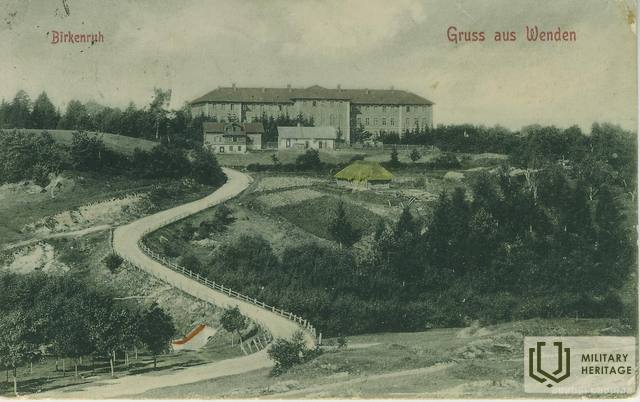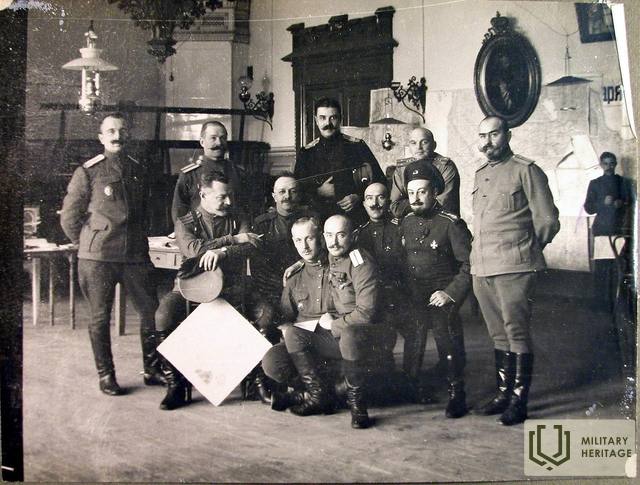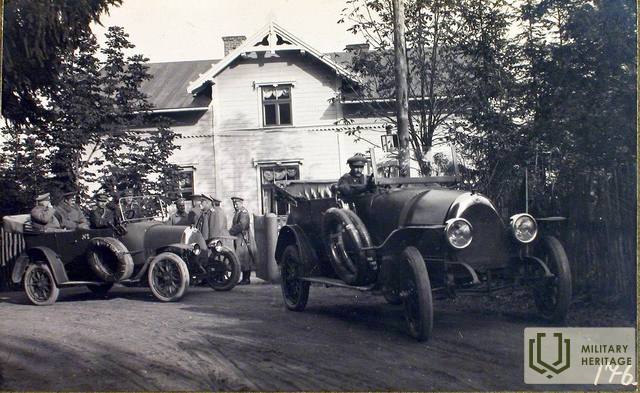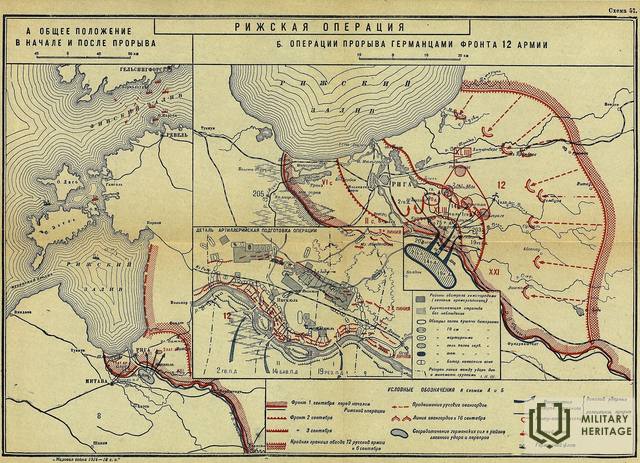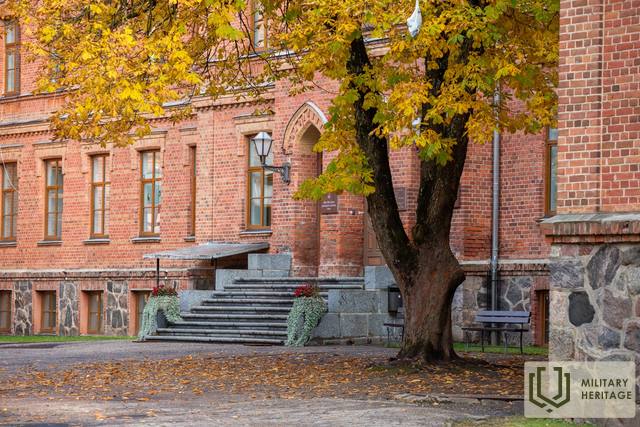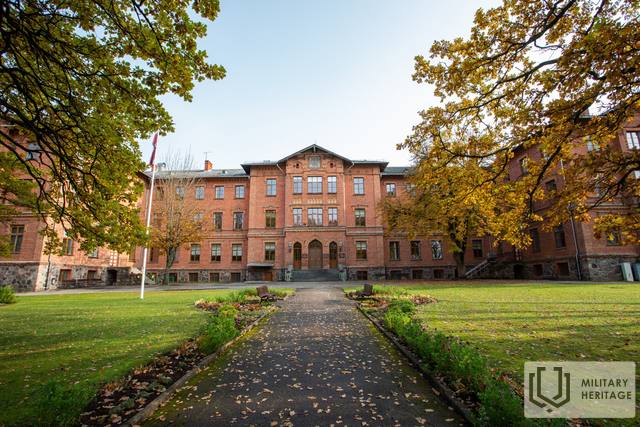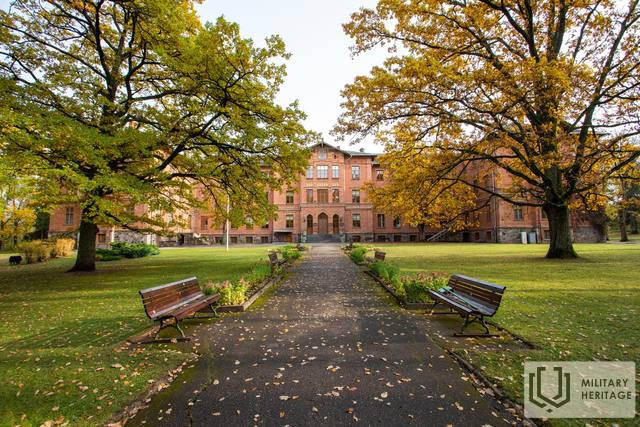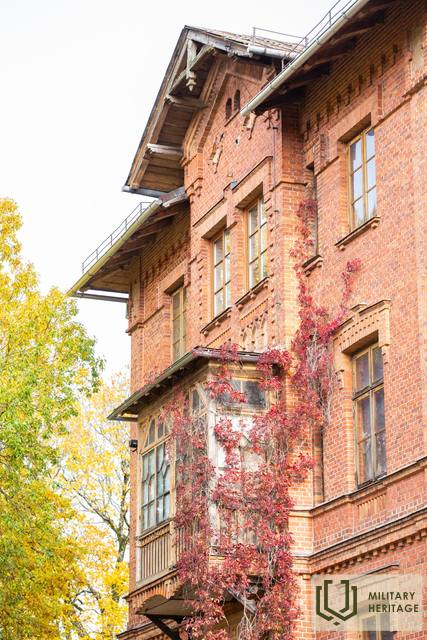Bērzainės gimnazija – Pirmojo pasaulinio karo liudininkė
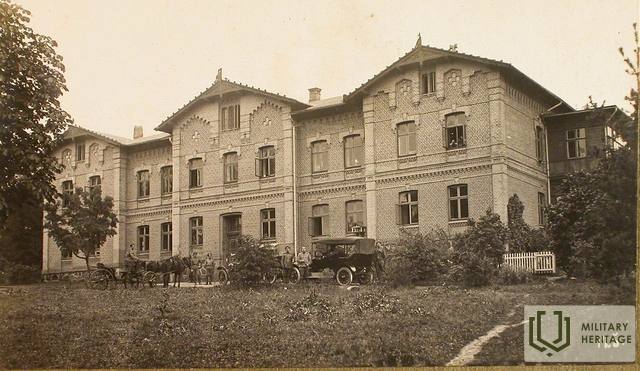
1915 m. pavasarį ir vasarą vokiečių kariuomenė okupavo Kuršą ir Žiemgalą. Kariaujančių šalių kariuomenė buvo dislokuota Dauguvos upės pakrantėse. Vidžemė tapo fronto teritorija, o Cėsys – fronto miestu, aplink kurį buvo įsikūręs carinės Rusijos armijos Šiaurės fronto 12-osios armijos štabas, kuris 1915 m. vasarą ir rudenį persikėlė į Bėrzainę netoli Cėsių (Birkenruh bei Wenden), dabartinės Cėsių Bėrzainės pradinės mokyklos pastate ir teritorijoje.
12-osios armijos štabas buvo suformuotas 1915 m. sausio mėn. 1915 m. rugpjūčio 13 d., padalijus Šiaurės vakarų frontą į Šiaurės ir Vakarų frontus, 12-osios armijos štabas buvo išformuotas, o 13-osios armijos štabas buvo pervadintas į 12-osios armijos štabą. Jis buvo dislokuotas Kovelyje, Voluinės gubernijoje, tačiau 1915 m. vasarą ir rudenį persikėlė į Birkenruhą prie Vendeno.
1915 m. pabaigoje vokiečiai pradėjo statyti gynybines pozicijas Rygos pakraščiuose. Šis frontas išliko nepakitęs iki 1917 m. rugpjūčio mėn. Beveik dvejus metus Latvijos šauliai kovojo Rygos fronte 12-osios armijos sudėtyje Latvijos teritorijoje.
12-oji armija (vadas Dmitrijus Parskis – Дмитрий Павлович Парский) Rygos fronte prieš vokiečių puolimą 1917 m. rugpjūtį turėjo 192 000 kareivių, 1102 patrankas ir 1900 kulkosvaidžių, įskaitant 18 500 kareivių ir 102 kulkosvaidžius aštuoniuose Latvijos šaulių pulkuose. Armijos operacinis kovinis štabas buvo įsikūręs netoli fronto, tačiau štabas, kuris planavo armijos verbavimą, aprūpinimą ir įtvirtintų gynybinių linijų statybą, buvo įsikūręs Bērzainėje netoli Cėsių. Atsitraukimo atveju buvo pastatyta Cėsių (Vendenos) įtvirtinimų linija arba Cėsių (Vendenos) pozicijos, kurios puslankiu driekėsi nuo Dauguvos netoli Koknesės per Malpīles iki Pēterupės žiočių į Rygos įlanką. Žemėlapis: Zusammendruck Riga
Cėsyje 12-osios armijos štabas savo personalo darbui ir gyvenimui naudojo ne tik pagrindinį Bērzainės gimnazijos pastatą, bet ir kitus šios mokymo įstaigos mokytojų gyvenamuosius bei ūkinius pastatus, taip pat privačius namus mokyklos apylinkėse. Štabo teismo reikmėms buvo pritaikyti ir mieste esantys Taikos teismo rūmai. 1917 m. rugsėjį, Rusijos kariuomenei pasitraukiant iš Rygos fronto, buvo sunaikintos ir Bērzainės patalpos. Kurį laiką mokyklos pirmame ir antrame aukštuose netgi buvo laikomi arkliai.
12-osios armijos daliniai dalyvavo Rygos operacijoje, karo istorijoje dar vadinamoje Rygos mūšiu arba Itierio Rygos puolimu. Tai buvo Vokietijos imperijos 8-osios armijos puolamoji operacija Pirmojo pasaulinio karo metu, kurios tikslas buvo užimti Rygą. Mūšis vyko 1917 m. rugsėjo 1–6 d. Puolime iš vokiečių pusės dalyvavo daugiau nei 60 000 kareivių, o iš rusų pusės gynėsi 161 000 kareivių. Koviniai 12-osios armijos daliniai negalėjo sulaikyti vokiečių. Rygoje likę daliniai kartu su kariuomene atsitraukė į Vidžemę.
Po Pirmojo pasaulinio karo, nuo 1920 m., pastate veikė Cėsių (Bērzainės) valstybinė vidurinė mokykla.
Dabar šiose patalpose įsikūrusi Cėsių Bērzainės pradinė mokykla – plėtros centras.
Bērzaine gimnazijos istorija
1825 m. gegužę Albertas Voldemāras Holandersas, gimęs Rygoje, patricijų šeimoje, įkūrė savo švietimo įstaigą Brenguliuose (Alt-Wrangelshof) netoli Valmieros. Teologiją ir pedagogiką jis studijavo Tėrbate, Jenoje ir Berlyne. 1826 m. spalį Holandersas perkėlė savo švietimo įstaigą į Bėrzainius netoli Cėsių (Birkenruh bei Wenden) ir ten įkūrė prestižinę mokyklą, kurios šlovė gerokai viršijo Vidžemės gubernijos ribas.
1880 m. Vidžemės riterių landtagas nusprendė nupirkti Bērzainį ir jame įkurti riterių gimnaziją. Pradėta naujo pastato statyba, kurią finansavo vyriausybė. Valstybės taryba, vadovaudamasi Visuomenės švietimo ministro pasiūlymu, leido Vidžemės bajorams 1882 m. atidaryti švietimo įstaigą Bērzainyje netoli Cėsių pavadinimu „Imperatoriaus Aleksandro II gimnazija“. 1882 m. rugpjūtį A. Holanderso įkurtos mokyklos pagrindu buvo atidaryta klasikinė gimnazija su dėstomąja kalba vokiečių.
1889 m. Valstybės taryba, vadovaudamasi Visuomenės švietimo ministerijos siūlymu, nusprendė per trejus metus uždaryti Bėrzainės „Imperatoriaus Aleksandro II gimnaziją“. Bėrzainės gimnazijos uždarymo ceremonija įvyko 1892 m. birželio 6 d.
Nuo A. Hollanderio įkurtos švietimo įstaigos įkūrimo jos direktoriais ėjo: 1825–1861 m. – dr. Albertas Hollanderis (Hollanderis); 1861–1869 m. – Martinas Leffleris (1813–1869; Löffleris), 1861–1869 m.; 1869–1882 m. – Albertas Leffleris (1843–1899; Löffleris); 1882–1884 m. – prof. dr. Ernestas Kochas (1839–1920; Kochas); 1885–1885 m. – einantis pareigas Hermanas Stiefas (1853–1888; Stiefas); 1886–1892 m. – Adolfas Feltas (1841–1925; Feldtas).
Gavusi Visuomenės švietimo ministerijos leidimą, 1906 m. Bērzainėje netoli Cėsių vėl pradėjo veikti Vidžemės riterių vyrų gimnazija, tačiau Pirmojo pasaulinio karo metu ji nutraukė veiklą. Nuo 1906 iki 1913 m. jis dirbo gimnazijos direktoriumi.
Reinholdas Tantscheris (g. 1863 m.; Tantscheris), tačiau nuo 1914 iki 1915 m. direktoriaus pareigas atliko Leo Goertzas (g. 1856 m.; Goertzas).
Tālis Pumpuriņš, Cėsių istorijos ir meno muziejus
https://gwar.mil.ru/?year=1917&month=9&event=771
https://lv.wikipedia.org/wiki/R%C4%ABgas_oper%C4%81cija#cite_ref-autogenerated1_1-0




